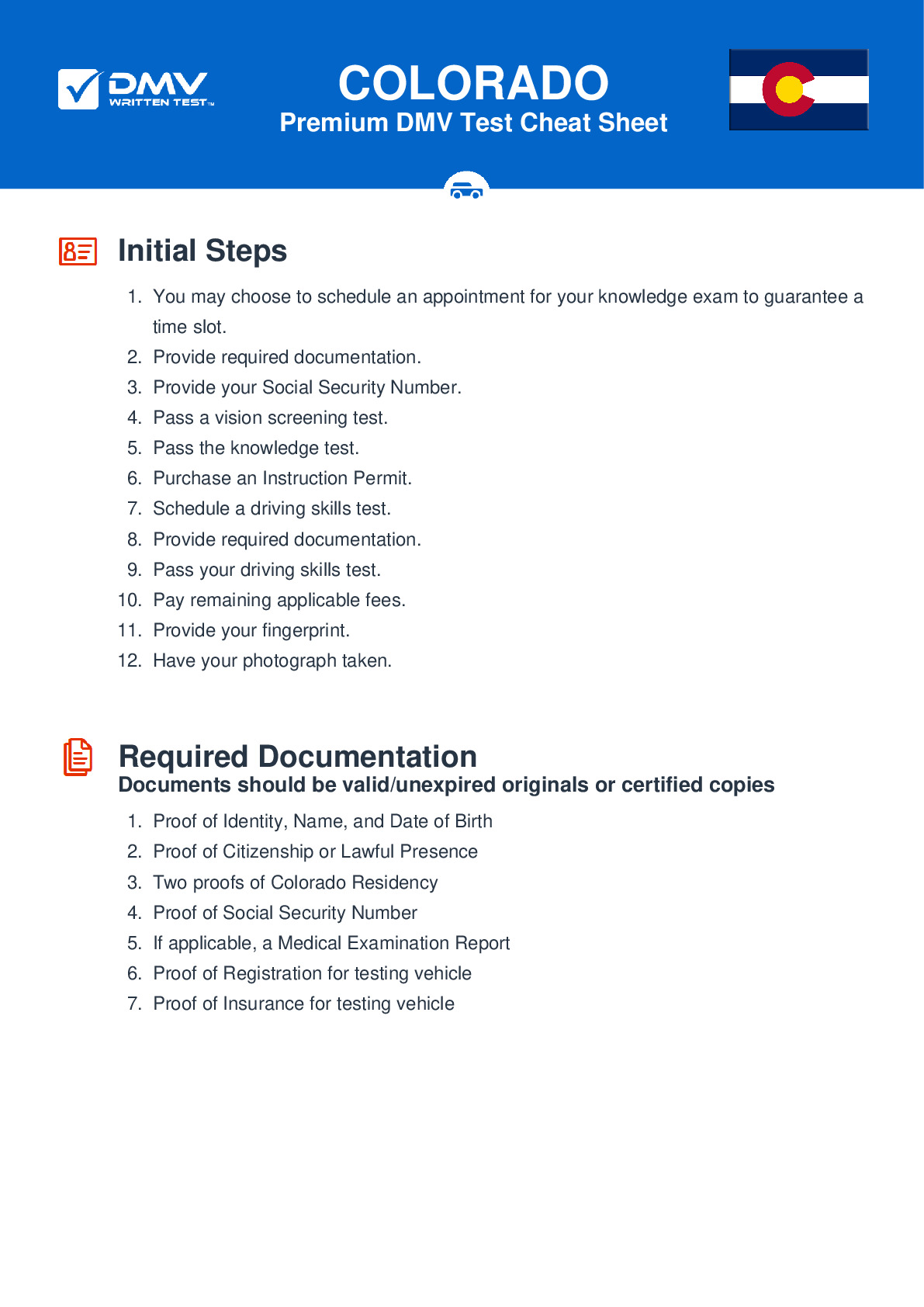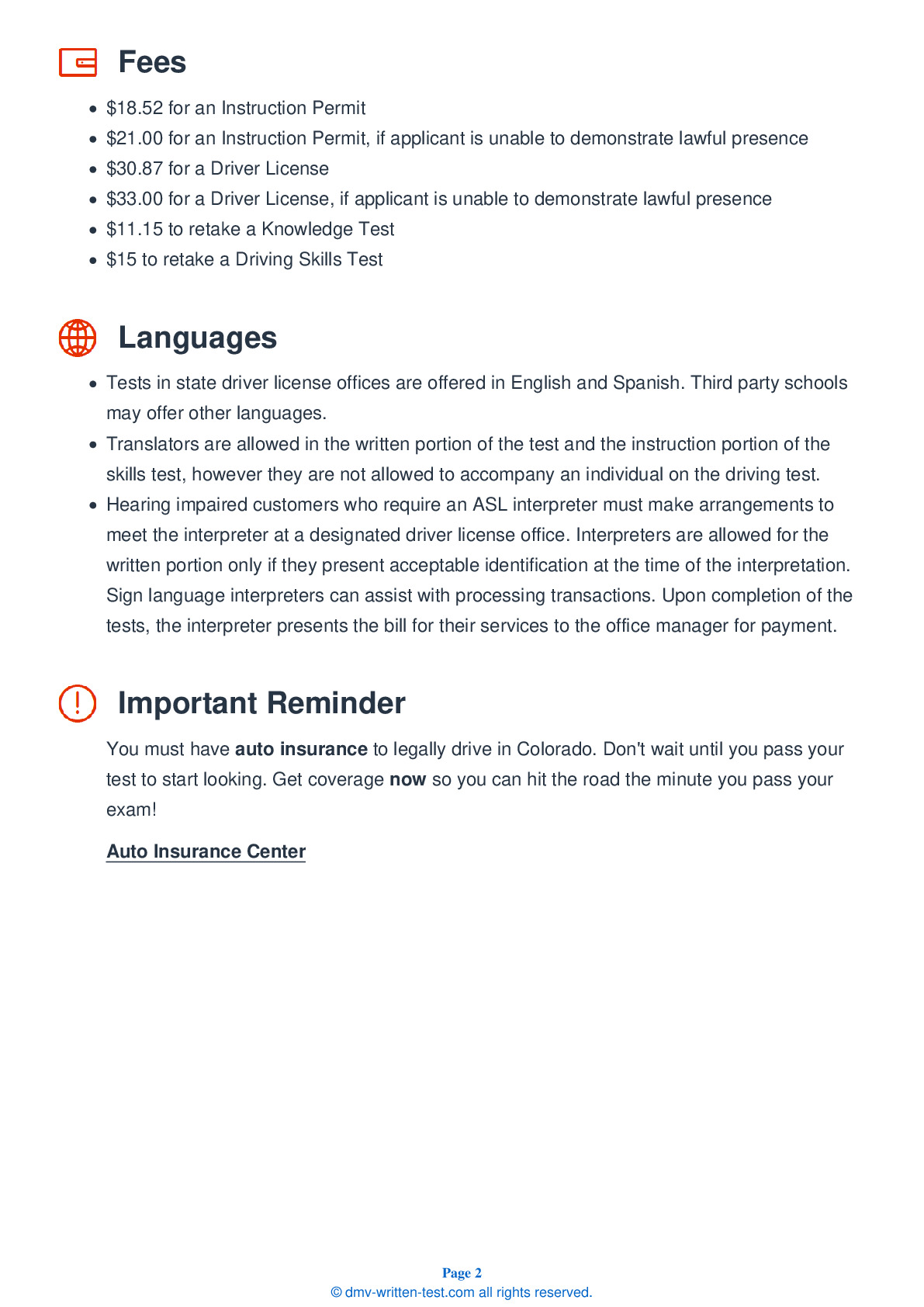2025 Colorado Permit Test 19
The following questions are from real DMV written tests. These are some of the actual permit questions you will face in Colorado. Each permit practice test question has three answer choices. Select one answer for each question and select "grade this section." You can find this button at the bottom of the drivers license quiz. For a complete list of questions and answers for Colorado please visit https://cheat-sheets.dmv-written-test.com/en/colorado/car.
Number of Tests
Number of Question
Passing Score
13. A leaky exhaust system in your vehicle is dangerous because it can cause:
Explanation
The exhaust system carries exhaust gas out of the vehicle and prevents fumes from entering into the passenger compartment. To prevent carbon monoxide poisoning, keep your exhaust system free of leaks. Replace all defective parts immediately.
14. While driving on a two-lane road without bicycle lanes, you encounter a bicyclist traveling in the same direction. What is the safest way to pass the bicyclist?
Explanation
You should pass a bicyclist the same way you would pass any other vehicle, but not so fast or close to them that you throw debris in their face or blow them around with the draft of air from your vehicle. Allow at least 3 feet of space between your side mirror and the bicyclist, or at least 5 feet on higher speed roads or when there is a group of bicyclists. Honking unnecessarily may startle riders and make them more likely to crash.
15. Drivers must yield to a pedestrian:
Explanation
Drivers must always yield to pedestrians in the street, even if they are crossing against a red light or are otherwise being careless.
16. When driving on wet pavement, it's important to remember:
Explanation
Wet roadway surfaces can be dangerously slick, especially immediately following a rainfall. When you are driving on wet roads, your vehicle is traveling on a thin layer of oil, dirt, and water. Slow down when there is heavy rain, standing water, or slush on the road to reduce the risk of your wheels losing traction on the slick surface.
17. You are driving when it starts to sleet or snow. You should:
Explanation
In snowy weather, keep your windshield and mirrors clear. Increase your following distance when driving in wet and cold weather because a slippery road surface will increase the distance needed for your vehicle to stop.
18. If you stop along the road at night:
Explanation




